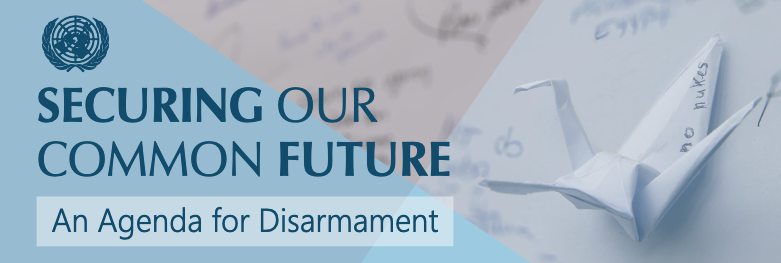UNODA Short Course Gun Free Zones
Overview
Armed violence – the intentional, threatened or actual use of arms to inflict death or injury – takes many forms around the world and has devastating direct and indirect consequences. More than two thirds of reported victims of armed violence live in countries that are not in armed conflict, and it has been estimated that every year, over 500,000 people die worldwide as a consequence of armed violence. The indirect consequences of armed violence extend far beyond these numbers: it not only causes injuries and often leads to forced migration but also undermines the stability of states and communities, and threatens the achievement of sustainable human development.
In this context, Governments must ensure that they are able to exercise legitimate authority and provide safety, security and development to their citizens, including women, children and adolescents. If they fail to do so – e.g. effective policing and a functioning rule of law are not provided – citizens may seek to guarantee their security through alternative forms of self-protection and resort to armed violence, including possession and use of illicit small arms.
In an attempt to prevent and reduce armed violence, a number of national and local governments, business and not-for-profit organizations, and local communities at the grassroots level have initiated the establishment of gun-free zones around the world. Gun-free zones have been previously established in Latin America (Colombia, El Salvador, Venezuela); Asia and the Pacific (Philippines, the Solomon Islands); and Africa (Sierra Leone, Senegal, South Africa). They include geographically limited spaces where the carrying or possession of guns is prohibited for civilians in order to reduce armed violence and promote public safety. Establishing and maintaining gun-free zones is a complex process which needs to be enabled by the environment and complementary arms control initiatives. Gun-free zones contribute to the implementation of various Sustainable Development Goals (SDGs), including SDG 11 to make cities inclusive, safe, resilient and sustainable; and SDG 16 to promote peaceful and inclusive societies (especially Targets 16.1 and 16.4).
This course offered as part of the “Supporting the Establishment and Maintenance of Gun-Free Zones in Asia-Pacific” project – headed by the United Nations Regional Centre for Peace and Disarmament in Asia and the Pacific – gives course participants an introduction to the essence of gun-free zones: what their key characteristics and outcomes are, how they can be established and maintained, and what steps should be followed when embarking on a project to develop a gun-free zone. An analysis will also be provided of the various factors which need to be considered in the assessment whether establishing a gun-free zone is an adequate response to address the armed violence problem prevailing in the geographical area concerned. Examples will be presented and lessons learnt discussed from countries and communities where gun-free zones have been previously implemented to prevent and reduce armed violence.
The course is based on the 2014 guidelines developed by the United Nations Office for Disarmament Affairs, entitled "How to establish and maintain gun-free zones", as well as more recent initiatives and best practice developed across Latin America, Asia and the Pacific, and Africa.
A forthcoming MOSAIC module (MOSAIC 03.60: Gun-Free Zones ) is going to focus on small arms and light weapons control in the context of gun-free zones. MOSAIC is a set of voluntary, practical guidance notes that each combine the best small-arms expertise in succinct, operational advice.
Objectives
- Describe the basic concept of gun-free zones;
- Understand why gun-free zones are established, what is required, and how they generally function;
- Create a hypothetical case of a gun-free zone, built around its four main pillars: planning, programming, implementation and evaluation;
- Link the idea of establishing gun-free zones with wider issues related to armed violence and conventional arms control; and
- Identify building blocks for a Gun-Free Zone Plan for your own environment.
|
| Audience: The course is open to all interested audiences. |
|
| Components and Methodology: Each module takes approximately 20 minutes and can be completed at the learner’s own pace The course consists of four thematic modules:
The course is available in English and is held in the Disarmament Education Dashboard, thus participants need a computer or mobile device, with audio and reliable internet connection. No special software is required. |
|
| Certificate: Upon successful completion of thematic modules, including examination and course evaluation a certificate of completion will automatically be issued to the participant. |
Short-course Series
The UN Office for Disarmament Affairs Short Course Series aims at making available quality education material on disarmament, arms control, non-proliferation and issues cross-cutting with security, such as gender and development. The courses are targeted for and available to the general public at UNODA’S globally accessible e-Learning platform disarmamenteducation.org.
In line with the UN Secretary-General’s Agenda for Disarmament this short-course series aims to contribute to the implementation of the Sustainable Development Goals.


